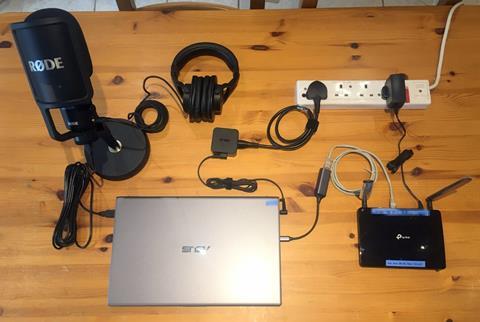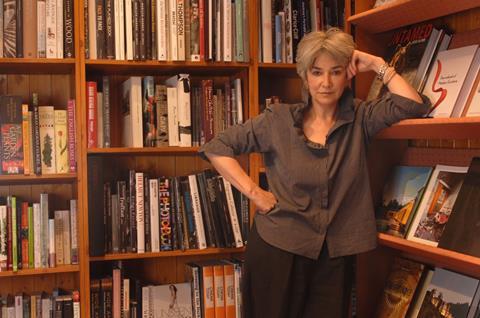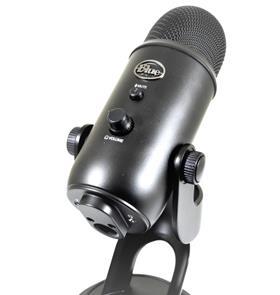Boom Radio, which launched last month, is thought to be the first UK station without a central studio facility. Kevin Hilton found out how the presenters are broadcasting entirely from home.

A name often says a lot about something. Boom Radio, which went on air in the UK on 14th February, is a new music and talk station for Baby Boomers (people born between 1946 and 1963/64). What the name doesn’t say - but the presenters do - is that it is being broadcast from the DJs’ homes, not a traditional studio centre.
While broadcasting from home is not new - it dates back to the 1970s and became easier during the 90s thanks to connection technologies such as ISDN (Integrated Services Digital Network) - the coronavirus crisis has made it a necessity rather than an option. Boom Radio has taken the idea further to become what is believed to be the first national UK radio station without a central studios building.
- Read more: How video became the radio star
On air the station is targeting the 60+ audience, which founders Phil Riley - a radio executive (Chrysalis Radio and Orion Media) - and David Lloyd, who has worked variously as a presenter, programme controller and managing director, saw as abandoned by most stations but which still wanted to hear not only the music they grew up with but also contemporary artists.
To develop the necessary technical platform, Riley and Lloyd called on Quentin Howard, who has launched in the region of 32 radio stations over his time with GWR Group (which owned Classic FM), the Digital One DAB multiplex operator and BFBS.
“Phil Riley asked me how would we set it up technically and I suggested not having an office or studios,” Howard comments.
“Instead, we would do it in the cloud and rely on somebody else’s racks room, with all the presenters working from home.”

As a start, Howard and Lloyd looked into suitable playout systems and what equipment the presenters would need at home.
“Some of the major vendors had to rush to get remote kit working when Covid changed everything,” Howard says. “We didn’t want just remote voice tracking, so we talked to most of the manufacturers about whether we could host their equipment on someone else’s system in the cloud.”
Voice tracking is an established practice in radio, allowing presenters to record links in advance of broadcast. The show is ‘assembled’ on playout, with the automation playing in the presenter’s voice and corresponding music. Howard was looking for something beyond this, so several demo systems were tested with, in Howard’s description, “me and David playing DJ”.
Decisions also had to be made regarding advertising billing and the traffic system, which schedules and manages commercials. “We talked to software people and it became clear that the best option was to let someone run that for us as a service, because it would cost less than employing people to do it in-house,” Howard says.
“Phil Riley asked me how would we set it up technically and I suggested not having an office or studios. Instead, we would do it in the cloud and rely on somebody else’s racks room, with all the presenters working from home,” Quentin Howard
Boom Radio selected RCS Sound Software for not only automation and music scheduling but also management of advertisement playout and audio distribution. The station is using Zetta2Go, the remote, browser-based version of RCS’ automation system, for presenters to build programmes with the GSelector music scheduler. These systems run on servers at RCS’ premises in Godalming, Surrey, which hosts the ‘radio station as a service’.
Howard explains that Zetta2Go was chosen partly because it has the ability to be “absolutely live” if necessary. The majority of Boom Radio’s output is pre-recorded, although not in the same way as many stations.
“It is mainly voice tracking,” Howard acknowledges, “but not in the ‘That was’, ‘This is’ style that is common now. We want the presenters to talk to the listeners and get their personality across. They are voice tracking but they can do it very close to broadcast, as if live. One presenter is doing half an hour in advance, while others are recording a day before.”

Presenters are able to react to any messages that come in on email or social media, as well as going through the newspapers. News comes in live on the hour from IRN (Independent Radio News branded as Sky News), with regular weather round-ups dropped in after the bulletins. All the presenters are radio veterans and include Graham Dene (Capital Radio’s breakfast host in the 80s), David Hamilton (BBC Radios 1 and 2), Jane Markham (Classic FM), Nicky Horne (Capital), Roger ‘Twiggy’ Day (Radio Caroline), Anna Raeburn (Capital’s agony aunt) and David Lloyd himself.
A few had home studios but for the majority Howard put together an equipment package to get on air and connect with Boom Radio’s infrastructure. “I researched what kit was about because it had been quite a long time since I’d built a radio station,” he admits. “I didn’t want to say, ‘This is what I did in 1990’. I was in the nice position of buying and testing a lot of equipment.”
The starting point for any radio personality is the voice, making the choice of microphone crucial. USB microphones have proved immensely popular for podcasting, YouTube videos and gaming; they have shifted into mainstream broadcasting as home working became the norm. Howard’s tests and resulted in two main choices: the RØDE NT-USB and the Blue Yeti.

These are Boom Radio’s “reference mics” but offer different features for presenters with differing requirements and technical skills. “The NT-USB has a nice big diaphragm, with a headphone input and large knobs for adjustments,” Howard comments. “I thought about how to explain what to do to a presenter over the phone and it really should be ‘You turn that big knob either up or down’. Graham Dene is using the NT-USB because he wants to adjust the volume depending on what he is doing. The Blue Yeti doesn’t have that level of control, which suits other presenters.”
A few other mics are in the mix - the Thomann t.bones SC420/430 and Audio-Technica AT2020 - but the primary consideration, apart from ease of use and good quality, was for all models to perform well in what Howard describes as “less good acoustic conditions”. While the equipment package sent out to the presenters included a piece of acoustic foam to prevent ‘bounce’, Howard knew the mics would be used in vastly different environments. “I took them into various rooms in my house to simulate differing technical conditions,” he says. “Some of our presenters live in Spain, in traditional villas with a lot of stonework. Which is why I selected mics with the nicest, tightest cardioid patterns so they only picked up the voice and not the sound of the room.”
Also included in the equipment package are XLR to USB interfaces - Mackie, Behringer, M Audio, Steinberger or Focusrite units - and laptops for the automation software, which is accessed through a Chrome browser. “They’re fairly basic but they’re doing only one job,” Howard explains. “The idea is that everything is launched with one click and there’s the radio station in front of you. We wanted it to be as simple as Googling or email. The connection is over WiFi or IP and before going on air we tested things like broadband speed and how far the computer was from the router.”

All recording and programme assembly is done directly into Zetta. Howard says he has the capability to adjust levels if necessary, but this is not an instantaneous process. Boom Radio broadcasts on small-scale DAB multiplexes in London, Portsmouth, Glasgow, Bristol, Manchester and Birmingham. It is also available nationally through internet radio (TuneIn), as well as the RadioPlayer streaming app and smartspeakers (Alexa and Google Nest).
Listeners have a choice of bit rates for streaming, but Howard says 128kb/s MP3 is turning out to be the default. “We have 48k HE AAC for mobile users to keep data to a minimum, 64kAAC, which is popular on apps, and 128 AAC has just been added,” he explains. “I’m also looking at a 320 AAC or FLAC stream, because a high proportion of our listeners have Sonos, which illustrates that Baby Boomers take their audio seriously and have disposable income for audio systems.”
Quentin Howard acknowledges that a super high-quality stream “isn’t a given yet”, partly due to streaming costs, although it could be made available through Boom Radio’s Listener Club. Another sign that the more mature radio listener is not one to be overlooked.
- Read more: 5G vista enhancing the view of live sport
























2 Readers' comments